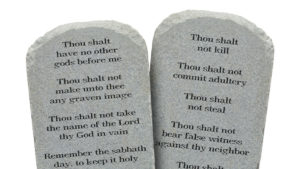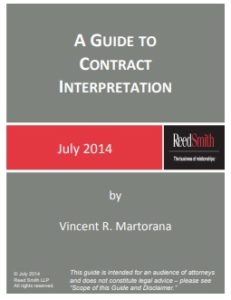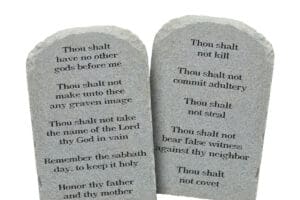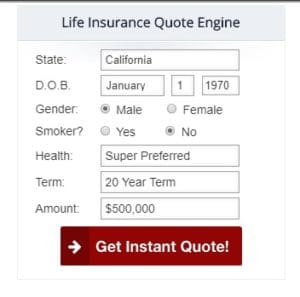Why were the 10 commandments written in stone, not paper, or other media?
Who is G-d under the Pledge of Allegiance?
What does it mean if you #affirm that you believe in God, which religion? which God?
For example ONLY,
The Elks Club on their application Question # 2 asks
“Do you believe in God and are you willing to attest to that belief? ______________”
Here’s some clarification from the Elks annotated code
Page 19 Section 4 – 03 An applicant answering the question in the application for membership, relative to belief in a Supreme Being, to the effect that he was an “agnostic,” is not eligible to membership. He must state that he believes in the existence of God.
Page 128
Section 14.010. An applicant for membership in the Order shall be:
(a) A citizen of the United States of America who will pledge allegiance to and salute our Flag.
(b) Not less than twenty-one (21) years of age.
(c) A believer in God.
(d) Of good character.
Page 131 The applicant must state that he believes in God,
Page 1 PREAMBLE To inculcate the principles of Charity, Justice, Brotherly Love and Fidelity; to recognize a belief in God;
Question # 5
Are you willing to assume an obligation that:
(a) will not conflict with your duties to yourself, or your family, or your religious or political opinions, and that
(b) Will bind you to uphold the Constitution and laws of the United States of America?__________
What is the obligation?
This is NOT a Elks Website and may not be cited as anything official with the Elks. Use only the official Elks information!
What God are we talking about?
Pledge of Allegiance
“I pledge allegiance to the Flag of the United States of America, and to the Republic for which it stands, one Nation under God, indivisible, with liberty and justice for all.” Bensguide *
However, the U.S. Court of Appeals for the Ninth Circuit held “under God” in the Pledge of Allegiance violated the Establishment Clause of the First Amendment, because the Pledge conveys government endorsement of monotheism, may appear to a non-believer as government coercion of a particular religious orthodoxy, and was created for a religious purpose. The words “under God” were added “to further acknowledge the dependence of our people and our Government upon the moral directions of the Creator.” The Supreme Court has not addressed this issue! Georgetown.edu * wikipedia
Under God
In 1954, in response to the #Communist threat of the times, President Eisenhower encouraged Congress to add the words “under God,” creating the 31-word pledge we say today. ushistory.org/pledge * Note that question # 6 asks if you want to overthrow the US Government by force! In the 2004 version of the Elks application question # 7 specifically asked if you were a member of the Communist Party.
President Lincoln’s Gettysburg Address said “under God” Lincoln’s words “under God” as defining words that set the US apart from other nations
During the Cold War era, many Americans wanted to distinguish the United States from the state atheism promoted by Marxist-Leninist countries, thus a movement to add “under God” to the Pledge of Allegiance
President Eisenhower said – We are reaffirming the transcendence of religious faith in America’s heritage and future; in this way we shall constantly strengthen those spiritual weapons which forever will be our country’s most powerful resource, in peace or in war
Christianity and capitalism and a challenge to the New Deal may have played a larger role. Read More Wikipedia – Under God
Flag Code Findings
Findings
“Congress finds the following:
“(1) On November 11, 1620, prior to embarking for the shores of America, the Pilgrims signed the Mayflower Compact that declared: ‘Having undertaken, for the Glory of God and the advancement of the Christian Faith and honor of our King and country, a voyage to plant the first colony in the northern parts of Virginia,’.
“(2) On July 4, 1776, America’s Founding Fathers, after appealing to the ‘Laws of Nature, and of Nature’s God’ to justify their separation from Great Britain, then declared: ‘We hold these Truths to be self-evident, that all Men are created equal, that they are endowed by their Creator with certain unalienable Rights, that among these are Life, Liberty, and the Pursuit of Happiness’.
“(3) In 1781, Thomas Jefferson, the author of the Declaration of Independence and later the Nation’s third President, in his work titled ‘Notes on the State of Virginia’ wrote: ‘God who gave us life gave us liberty. And can the liberties of a nation be thought secure when we have removed their only firm basis, a conviction in the minds of the people that these liberties are of the Gift of God. That they are not to be violated but with His wrath? Indeed, I tremble for my country when I reflect that God is just; that his justice cannot sleep forever.’
“(4) On May 14, 1787, George Washington, as President of the Constitutional Convention, rose to admonish and exhort the delegates and declared: ‘If to please the people we offer what we ourselves disapprove, how can we afterward defend our work? Let us raise a standard to which the wise and the honest can repair; the event is in the hand of God!’
“(5) On July 21, 1789, on the same day that it approved the Establishment Clause concerning religion, the First Congress of the United States also passed the Northwest Ordinance, providing for a territorial government for lands northwest of the Ohio River, which declared: ‘Religion, morality, and knowledge, being necessary to good government and the happiness of mankind, schools and the means of education shall forever be encouraged.’
“(6) On September 25, 1789, the First Congress unanimously approved a resolution calling on President George Washington to proclaim a National Day of Thanksgiving for the people of the United States by declaring, ‘a day of public thanksgiving and prayer, to be observed by acknowledging, with grateful hearts, the many signal favors of Almighty God, especially by affording them an opportunity peaceably to establish a constitution of government for their safety and happiness.’
“(7) On November 19, 1863, President Abraham Lincoln delivered his Gettysburg Address on the site of the battle and declared: ‘It is rather for us to be here dedicated to the great task remaining before us—that from these honored dead we take increased devotion to that cause for which they gave the last full measure of devotion—that we here highly resolve that these dead shall not have died in vain—that this Nation, under God, shall have a new birth of freedom—and that Government of the people, by the people, for the people, shall not perish from the earth.’
“(8) On April 28, 1952, in the decision of the Supreme Court of the United States in Zorach v. Clauson, 343 U.S. 306 (1952), in which school children were allowed to be excused from public schools for religious observances and education, Justice William O. Douglas, in writing for the Court stated: ‘The First Amendment, however, does not say that in every and all respects there shall be a separation of Church and State. Rather, it studiously defines the manner, the specific ways, in which there shall be no concern or union or dependency one on the other. That is the common sense of the matter. Otherwise the State and religion would be aliens to each other—hostile, suspicious, and even unfriendly. Churches could not be required to pay even property taxes. Municipalities would not be permitted to render police or fire protection to religious groups. Policemen who helped parishioners into their places of worship would violate the Constitution. Prayers in our legislative halls; the appeals to the Almighty in the messages of the Chief Executive; the proclamations making Thanksgiving Day a holiday; “so help me God” in our courtroom oaths—these and all other references to the Almighty that run through our laws, our public rituals, our ceremonies would be flouting the First Amendment. A fastidious atheist or agnostic could even object to the supplication with which the Court opens each session: “God save the United States and this Honorable Court.” ’
“(9) On June 15, 1954, Congress passed and President Eisenhower signed into law a statute that was clearly consistent with the text and intent of the Constitution of the United States, that amended the Pledge of Allegiance to read: ‘I pledge allegiance to the Flag of the United States of America and to the Republic for which it stands, one Nation under God, indivisible, with liberty and justice for all.’
“(10) On July 20, 1956, Congress proclaimed that the national motto of the United States is ‘In God We Trust’, and that motto is inscribed above the main door of the Senate, behind the Chair of the Speaker of the House of Representatives, and on the currency of the United States.
“(11) On June 17, 1963, in the decision of the Supreme Court of the United States in Abington School District v. Schempp, 374 U.S. 203 (1963), in which compulsory school prayer was held unconstitutional, Justices Goldberg and Harlan, concurring in the decision, stated: ‘But untutored devotion to the concept of neutrality can lead to invocation or approval of results which partake not simply of that noninterference and noninvolvement with the religious which the Constitution commands, but of a brooding and pervasive devotion to the secular and a passive, or even active, hostility to the religious. Such results are not only not compelled by the Constitution, but, it seems to me, are prohibited by it. Neither government nor this Court can or should ignore the significance of the fact that a vast portion of our people believe in and worship God and that many of our legal, political, and personal values derive historically from religious teachings. Government must inevitably take cognizance of the existence of religion and, indeed, under certain circumstances the First Amendment may require that it do so.’
“(12) On March 5, 1984, in the decision of the Supreme Court of the United States in Lynch v. Donelly, 465 U.S. 668 (1984), in which a city government’s display of a nativity scene was held to be constitutional, Chief Justice Burger, writing for the Court, stated: ‘There is an unbroken history of official acknowledgment by all three branches of government of the role of religion in American life from at least 1789 . . . [E]xamples of reference to our religious heritage are found in the statutorily prescribed national motto “In God We Trust” (36 U.S.C. 186) [now 36 U.S.C. 302], which Congress and the President mandated for our currency, see (31 U.S.C. 5112(d)(1) (1982 ed.)), and in the language “One Nation under God”, as part of the Pledge of Allegiance to the American flag. That pledge is recited by many thousands of public school children—and adults—every year . . . Art galleries supported by public revenues display religious paintings of the 15th and 16th centuries, predominantly inspired by one religious faith. The National Gallery in Washington, maintained with Government support, for example, has long exhibited masterpieces with religious messages, notably the Last Supper, and paintings depicting the Birth of Christ, the Crucifixion, and the Resurrection, among many others with explicit Christian themes and messages. The very chamber in which oral arguments on this case were heard is decorated with a notable and permanent—not seasonal—symbol of religion: Moses with the Ten Commandments. Congress has long provided chapels in the Capitol for religious worship and meditation.’
“(13) On June 4, 1985, in the decision of the Supreme Court of the United States in Wallace v. Jaffree, 472 U.S. 38 (1985), in which a mandatory moment of silence to be used for meditation or voluntary prayer was held unconstitutional, Justice O’Connor, concurring in the judgment and addressing the contention that the Court’s holding would render the Pledge of Allegiance unconstitutional because Congress amended it in 1954 to add the words ‘under God,’ stated ‘In my view, the words “under God” in the Pledge, as codified at (36 U.S.C. 172) [now 4 U.S.C. 4], serve as an acknowledgment of religion with “the legitimate secular purposes of solemnizing public occasions, [and] expressing confidence in the future.” ’
“(14) On November 20, 1992, the United States Court of Appeals for the 7th Circuit, in Sherman v. Community Consolidated School District 21, 980 F.2d 437 (7th Cir. 1992), held that a school district’s policy for voluntary recitation of the Pledge of Allegiance including the words ‘under God’ was constitutional.
“(15) The 9th Circuit Court of Appeals erroneously held, in Newdow v. U.S. Congress (9th Cir. June 26, 2002), that the Pledge of Allegiance’s use of the express religious reference ‘under God’ violates the First Amendment to the Constitution, and that, therefore, a school district’s policy and practice of teacher-led voluntary recitations of the Pledge of Allegiance is unconstitutional.
“(16) The erroneous rationale of the 9th Circuit Court of Appeals in Newdow would lead to the absurd result that the Constitution’s use of the express religious reference ‘Year of our Lord’ in Article VII violates the First Amendment to the Constitution, and that, therefore, a school district’s policy and practice of teacher-led voluntary recitations of the Constitution itself would be unconstitutional.”
Define God
- God : the supreme or ultimate reality: such as
- the Being perfect in power, wisdom, and goodness who is worshipped (as in Judaism, Christianity, Islam, and Hinduism) as creator and ruler of the universe
- Throughout the patristic and medieval periods, Christian theologians taught that God created the universe …
— Jame Schaefer - … the Supreme Being or God, the personal form of the Ultimate Reality, is conceived by Hindus as having various aspects.
— Sunita Pant Bansal
- Throughout the patristic and medieval periods, Christian theologians taught that God created the universe …
- Christian Science : the incorporeal divine Principle ruling over all as eternal Spirit : infinite Mind
- the Being perfect in power, wisdom, and goodness who is worshipped (as in Judaism, Christianity, Islam, and Hinduism) as creator and ruler of the universe
- or less commonly God : a being or object that is worshipped as having more than natural attributes and powers
- specifically : one controlling a particular aspect or part of reality
Greek gods of love and war - a person or thing of supreme value
had photos of baseball’s gods pinned to his bedroom wall - a powerful ruler
Hollywood gods that control our movies’ fates “god,” Merriam-Webster.com Dictionary, merriam-webster.com/dictionary/god. Accessed 4/25/2022.
References & Links
- An honest atheist will agree in a first cause – an original being chabad.org/What-Does-it-Mean-to-Believe-in-Gd
- answers in genesis.org/god/
Guide to #Contract Interpretation
- Read the Statute – Policy
- Read the Statute – Policy
- Read the Statute – Policy
- Then when you think you understand it, read it again
- Plain Language Video
- Tools to Read a Statute VIDEO
- Contract Interpretation in California: Plain Meaning, Parol Evidence and Use of the Just Result Principle
Our webpages on
- jiggery pokery and contract interpretation
- Evidence of Coverage EOC
- Plain Meaning Rule – How to read Policy – Contract
Ten #Commandments written in Stone?
Here are some various thoughts and arguments about why the 10 commandments were written in stone and not some other material.
This way they would lasting, the 10 commandments are testimony that referred to future generations, and therefore the materials should be durable OF STONE, AND THEREFOREENDURING AND WELL NIGH IMPERISHABLE. Few things are more enduring than some kinds of stone. Inscriptions exist, engraved on stone, which are certainly anterior to Abraham. No remains in metal go back so far. Gold and silver are, comparatively speaking, soft. Iron corrodes. Steel was unknown at the period. The material selected to receive the moral law was as nearly indestructible as possible. The tables may still exist, and may one day be discovered under the mounds of Babylon, or in the bed of the Euphrates. The character of the material was thus in harmony with the contents of the tables, consisting, as they did, of laws whereof no jot or tittle shall pass away till the fulfilment of all things (Matthew 5:18). study light.org And as the tables of stone signified the hardness of their hearts, so the hewing of them by Moses might signify the circumcision and ploughing up of their hearts, that they might be fit for the receiving of God’s mercies, and the performance of their duties. * Clarke’s note on Exodus 34:1 * study light.org/exodus/34-1>
***
“And he gave unto Moses … two tables of testimony, tables of stone, written with the finger of God.” “And the tables were the work of God, and the writing was the writing of God, graven upon the tables.” Exodus 31:18; 32:16. * amazing facts.org
***
Yet, you asked why God chose various mediums (voice, stone, paper) to express His words. While I might hazard guesses, God has not revealed His reasoning within the Scriptures. Hence, I too must remain silent.* biblehub.com/exodus/31-18 hermeneutics.stackexchange.com * la vista church of christ.org/
Seventh-day Adventists will falsely argue that since the Ten Commandments
were written in stone, that proves they will never be abolished! Jews too?
Seventh-day Adventists will falsely argue that since the Ten Commandments were written in stone, that proves they will never be abolished!
- We merely ask, then where was Adam’s stone copy of the 10 commandments?
- Why did God not give Adam a stone copy once for all time?
- Why is it that Moses was first person in history to not only see the 10 commandments, but the first person to hold the stone tablets upon which the 10 commandments were written?
- Why do Seventh-day Adventists argue that the ten commandment law is no longer written in stone, but in the flesh of the human heart in 2 Corinthians 3:3? (Of course 2 Cor 3:3 says the 10 commandments were abolished and the new Covenant, the law of Christ is written on human hearts) bible.ca
On the other hand
When you engrave letters into a stone, the letters and the stone are one entity. The letters are now a part of the stone itself, just like the Ten Commandments were engraved on the two tablets that Moses received on Mount Sinai. These letters can never be erased.
The harder, but more secure, method is the engraved way. This is when Judaism is a part of you in everything that you do. An “engraved Jew” will turn his vacation into a Jewish experience. Engraved Jews will light the Shabbat candles no matter where they are n college, a cruise … Judaism is just a part of who he or she is. Chabad.org *
***
Pod Cast Stone weathers and can be damaged or lost. The heart provides a writing space that is personal, can be frequently reviewed and can be carried with a person. The law that is written on our hearts is the same as that which God wrote on the tablets. ucg.org
What were the differences between the first and the 2nd set of the 10 Commandments?
Links & Resources
Chabad Shavuot – The 10 Commandments
Aish.com includes explanation of each commandment
Chabad Wi – Shavuos Guide
Insubuy Travel Health Insurance
Instant Quotes, Details and ONLINE Enrollment
Get Instant Term Life Quote
- Set up a phone, skype or face to face consultation
- Tools - Calculator to help you figure out how much you should get
Life Insurance Buyers Guide
How much life insurance you really need?
- Life Screening Form
- Please complete & return and we'll search and consult for you.
- Or try this one from NAAIP.org
- Please complete & return and we'll search and consult for you.
- Set up a phone, Zoom, skype or face to face consultation







